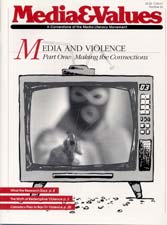Landmarks in the Media Violence Debate: Decade by Decade
|
Reprinted with permission from the March 1993 issue of the Congressional Quarterly Researcher. This article originally appeared in Issue# 62
|
Key events in research, legislation and public awareness over 50 years.
1950s: Rise in youth crime and juvenile delinquency prompts congressional hearings on television violence.
-
June 1952
First congressional hearings on violence in radio and television and its impact on children and youth held by House Interstate and Foreign Commerce Subcommittee.
1954
Sen. Estes Kefauver, (D-Tenn), chairs hearings of Judiciary Subcommittee to Investigate Juvenile Delinquency on role of TV shows in youth crime. Networks say no link.
1960's: Urban violence prompts more congressional hearings and government funding of research on TV violence.
-
1967
University of Pennsylvania begins monitoring television programming.
Sept. 23, 1969
Report of National Commission on the Causes mid Prevention of Violence cites TV violence as contributor to society's violence problem.
1970s: More congressional hearings; academic studies proliferate; court cases examine liability of TV in cases of real violence.
- 1972
Surgeon general's report on violence cites evidence of link between screen violence and aggressive behavior.
1975
National PTA adopts resolution demanding that networks and local TV stations reduce the amount of violence in programs and commercials (reaffirmed in 1989).
1976
American Medical Association's House of Delegates calls TV violence an "environmental hazard"
1980s: Reagan-era deregulation gives media free rein; cable TV, VCRs and rise of independent networks diminish power of networks to control violence on TV.
- 1982
National Institutes of Mental Health study says there's a clear consensus on link between TV violence and aggression.
September, 1984
Attorney General Task Force on Family Violence says evidence is overwhelming that TV violence contributes to real violence.
1984
American Academy of Pediatrics Task Force on Children and Television cautions physicians and parents that TV may promote aggression.
1985
American Psychological Association Commission on Youth and Violence notes research showing link between TV violence and real violence.
1990s: Networks issue a joint statement of policies on TV violence, made possible by an antitrust exemption passed by Congress. Anti-violence advocates step up pressure.
-
1990
Simon-Glickman Television Violence Act gives three major networks an antitrust exemption so they can formulate joint policy on violence. Nothing happens.
1992
American Psychological Association study shows research on link to real violence is ignored and calls for federal policy to protect society.
December 1992
Days before House hearings, the three major networks release joint violence policy and agree to an industry-wide conference.



